
The little fish clinging on in stormy seas
A local community is coming together to save seahorses living in the Algarve’s lagoons
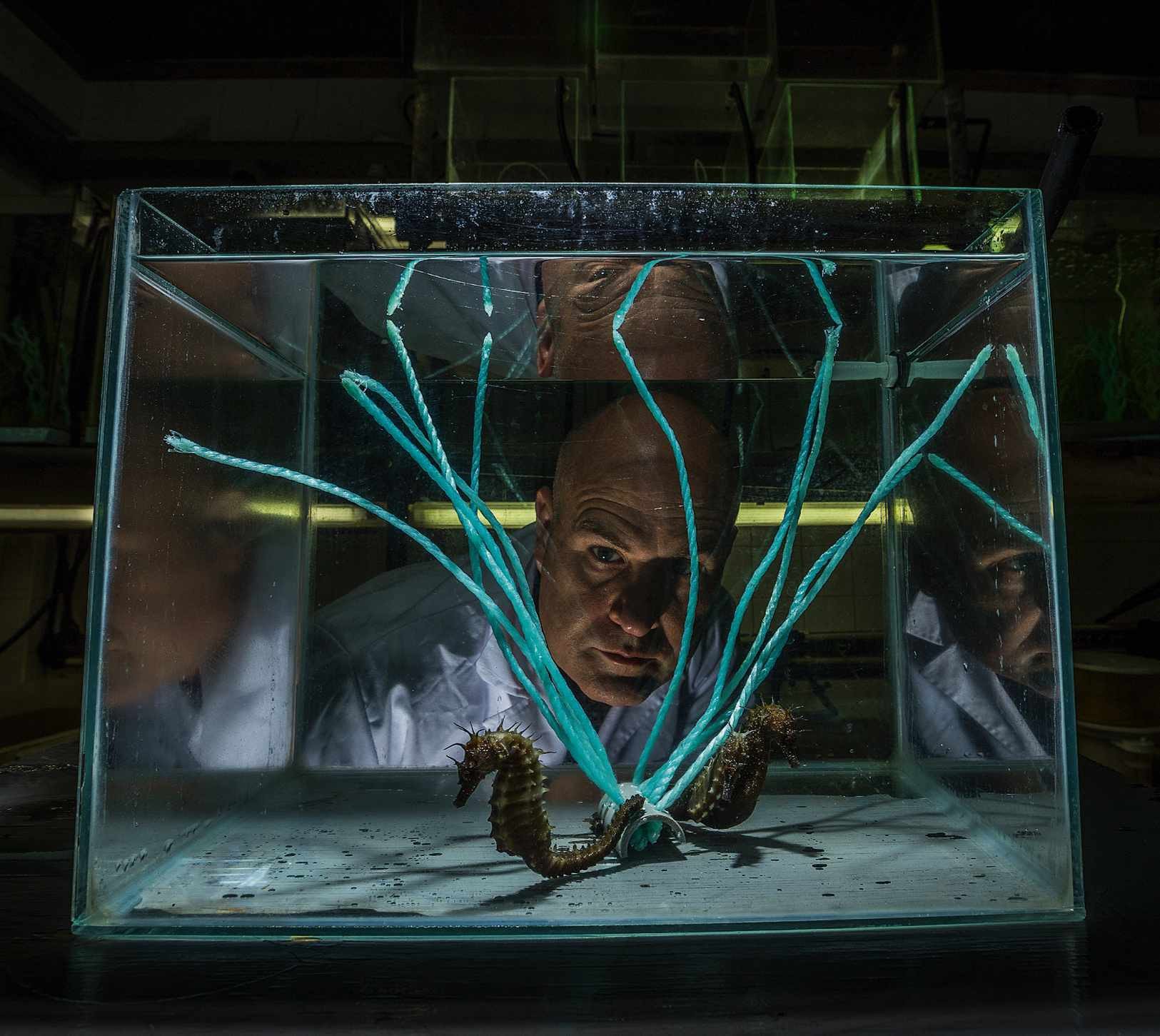
THE ROOM WHERE JORGE Palma and his team are trying to save seahorses is small, chilly and dark. It’s lit by cold neon tubes, the smell of salt hangs in the air, and pumps hum constantly. Palma, a marine biologist, stands in front of a series of aquariums housing about two dozen seahorses. Like children reaching for their parents’ hands, they wrap their delicate tails around the tufts of seagrass that gently sway in the water. This is humankind’s possibly futile attempt to save what it has been destroying for decades.
Palma’s ‘office’ is the Ramalhete Field Station in the Ria Formosa, on the Algarve, off the southern coast of Portugal. This wide lagoon system was once home to the world’s densest population of short- and long-snouted seahorses, with 1.5-2 million individuals discovered here in 2001 by Canadian researcher Janelle Curtis. But the past two decades have seen these populations dwindle to the brink of extinction.
Yet these fish are not going down without a fight. Researchers, environmental organisations, politicians, schools, fishermen and even the police are all trying to save them. After all, seahorses are a flagship species. If they thrive, their entire marine ecosystem thrives, too.
It was only seven years after Curtis’s discovery that marine scientists on the Algarve realised that the animals were in substantial decline. A 2008 census showed that the short-snouted seahorse (Hippocampus hippocampus) had decreased by 73 per cent, the long-snouted (H. guttulatus) by a staggering 94 per cent. Initially, experts suspected this was a natural population fluctuation, but it soon became clear that other factors were at play.
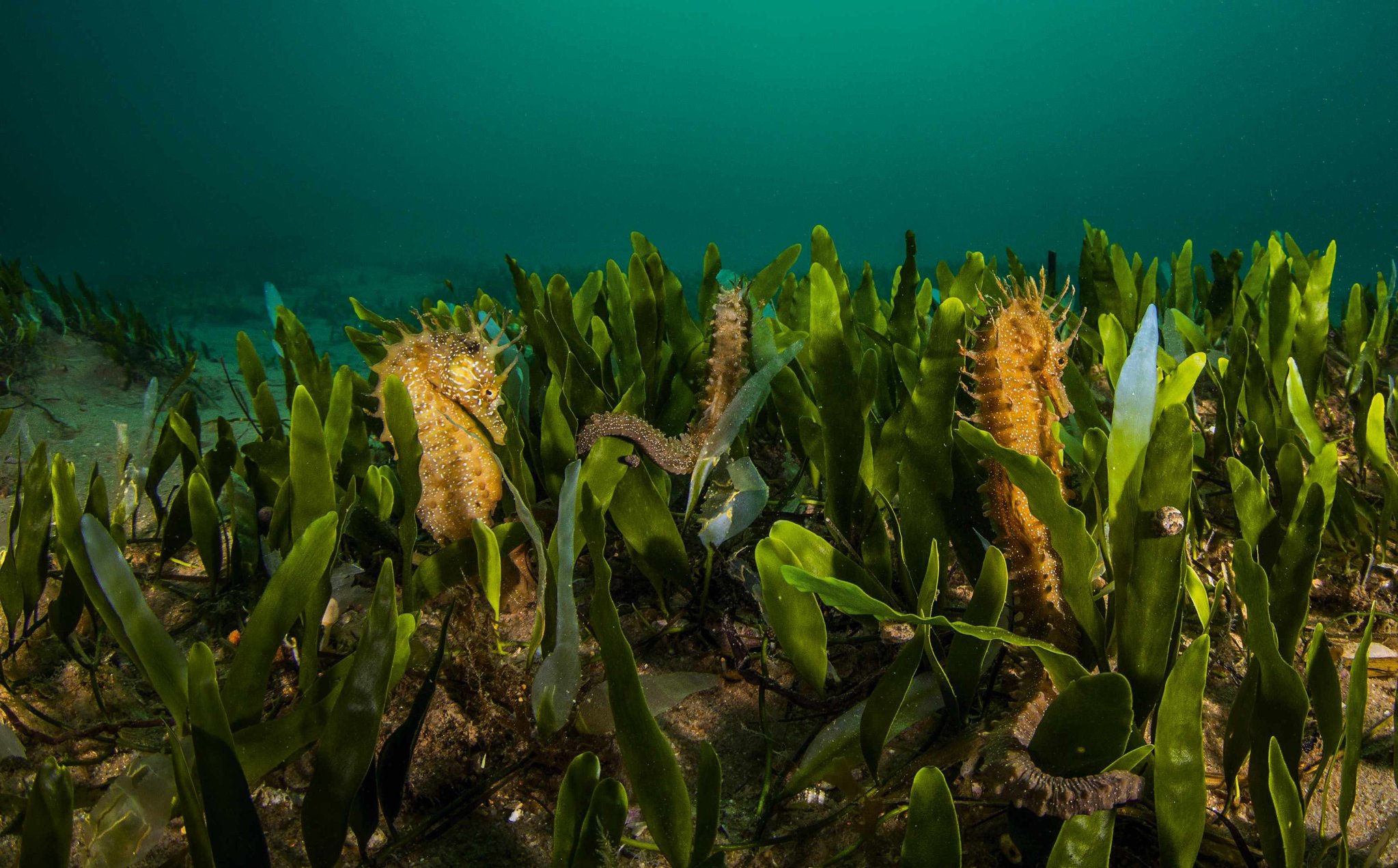
“Palma’s research team is experimenting with different habitats to determine which the seahorses prefer”
Coastal lagoons are an ideal habitat not only for seahorses, but also for hundreds of other marine species. “Unlike open waters, lagoons are sheltered. They often provide nursing habitats where juvenile fish can find food and safety from predators,” says Palma. Besides seahorses, the Ria Formosa is home to species such as soles, octopus, crabs, cuttlefish, rays and clams, as well as toadfish and seabass. Its seagrass meadows form small but very complex ecosystems that are essential for local biodiversity.
Clad in rubber boots, Palma carefully wades through one of the three pools surrounding the field station. Built in the 19th century for the tuna fishing industry, this facility has been the focal point for seahorse research in Portugal since 2006. Palma has been coming here almost every day for more than 15 years, researching the technical and nutritional requirements of the two species.
“A seahorse is a bony fish, like a tuna or salmon,” he says. “Yet evolution has made it change its morphology and life history. Seahorses have adapted differently to the underwater world – almost everything about them is different. They are unique and fascinating creatures.”
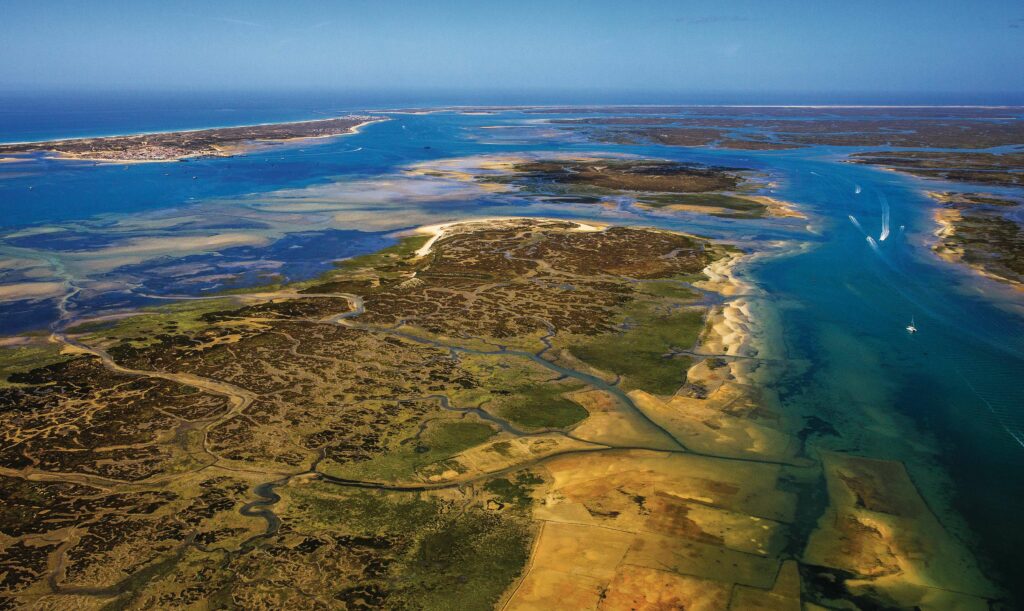
His sleeves rolled up, Palma repeatedly reaches into the water and plucks a good dozen tufts of seagrass, taking care not to damage their delicate roots. The grass will have a new home in his seahorse tanks.
Palma’s research team is experimenting with different habitats to determine which the seahorses prefer. Some of the tanks are brimming with seaweed, others hold just a few strands. “There are many reasons for the massive decline of the seahorses in the Ria Formosa,” he says. “Climate change, tourism, noise pollution and targeted hunting are all to blame. But habitat destruction, particularly of the seagrass meadows, has had by far the greatest impact. We want to find out how we can restore this habitat as quickly and as naturally as possible.”

Seahorses depend on seagrass. They are poor swimmers and are sedentary, clinging to the vegetation to prevent themselves from being washed away. This is why Palma is also experimenting with artificial seagrass. So far, his team has ‘planted’ 100m² of sisal (a Mexican plant that yields a stiff fibre) seagrass in the two Marine Protected Areas (MPAs) inside the Ria Formosa, in the hope it will quickly be colonised. They are also investigating another seagrass substitute made from nylon.
In November 2021, 60 seahorses bred in the Ramalhete aquariums were released into the MPAs, a first for Portugal. Follow-up surveys in the spring and summer of 2022 revealed a general increase in the number of seahorses in the area. “To see more seahorses is fantastic and we hope this trend continues for the next few years,” says Palma.
The scientists are able to track the captive-bred individuals through photo-identification. Much like human fingerprints, long-snouted seahorses each have a unique spot-pattern on their bodies, while short-snouteds sport a uniquely shaped coronet on the tops of their heads.
Despite this success, not everybody agrees that captive breeding is the best way to save the population. “Breeding seahorses is time-consuming, expensive and only successful under ideal conditions. It should be a last resort,” says marine biologist Miguel Correia, who worked with Palma for 15 years and is now part of the Project Seahorse team in Vancouver. “What difference will 60 animals make to a population of almost 100,000?” He would have preferred to have invested scarce research funds into combatting the most urgent problem: bottom-trawling, the main driver for habitat destruction.
Palma understands Correia’s view, but defends the breeding programme: “Of course, the priority needs to be habitat protection, because otherwise the animals will not have a place to live after release. In the next few months, we are going to release 120 more seahorses to determine if a higher number has a proportionately more positive effect. We have no more release plans beyond that, though.”

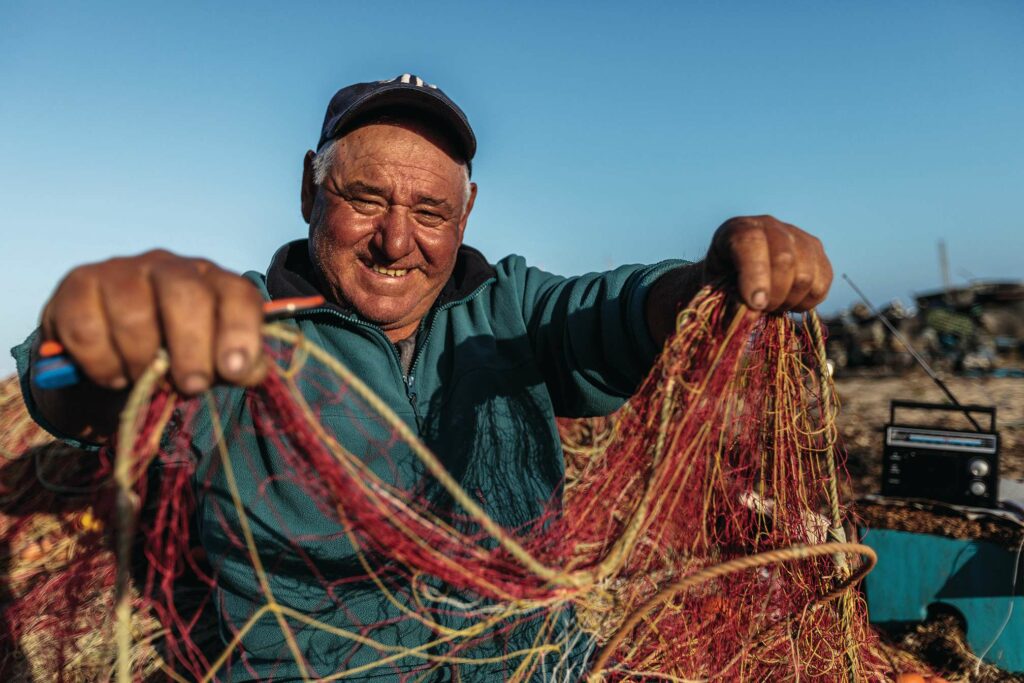
Most seahorses are monogamous. First, potential partners form a couple. If it’s a good match, the animals change their body colour from greenish-brown to pale white with a dark brown stripe. Then, they embark on a courtship dance, hanging together in the water, synchronising their body movements and linking tails. This ritual is repeated several times over the next few days.
During courtship, the female finishes producing what’s known as the oocyte batch (unfertilised eggs), which she passes to the male. She positions the opening in her abdomen opposite the male’s brood pouch, inserting the precious cargo as the two ascend together. The male stretches his body and pumps water into his pouch, then releases sperm, fertilising the oocytes. A month or so later, a mass of free-swimming young seahorses are released to start their own lives. On average, a short-snouted pair produce about 200-300 juveniles; a long-snouted pair about 400.
Even in a lab, the early days are beset by hardship, with feeding the main challenge. Juvenile seahorses need to consume 10 per cent of their bodyweight in food a day, mainly tiny crustaceans known as copepods. For their first two months, they must eat live prey, as their digestive systems cannot process dead or artificial food. “When we’re at breeding capacity, we need more than one million copepods per day,” says Palma. “Even in a natural lagoon system like ours, we cannot find this quantity anymore. And breeding this many is almost impossible.” As the captive seahorses grow, their diet is thus supplemented by brine shrimp, a common foodstuff in the aquaculture industry.
The MPAs within the lagoon play a crucial role in seahorse restoration. Releases take place within these areas because boat traffic and fishing are banned, meaning the seahorses are – in theory – undisturbed. Significantly, two representatives of the local fishing community, Rui Conceição and Vítor Silvestre, were involved in their establishment. While the industry is part of the problem, it’s now also part of the solution.
“We are happy and proud to have been involved in the decision-making process. After all, no one knows the Ria Formosa as well as we do,” says Conceição, as he repairs his nets in the afternoon sun. Conceição has been a fisherman for 47 years and is one of the most respected figures on Culatra, an island close to the lagoon. It wasn’t easy to convince his fellow fishermen of the need for the protected areas, he recalls. Almost all of the 1,000 people living on Culatra make their living directly or indirectly from fishing. Each protected zone reduces their potential income and increases competition elsewhere. Nevertheless, Culatra now stands united behind the decision.
“The school children visit the lagoon to carry out beach cleans”
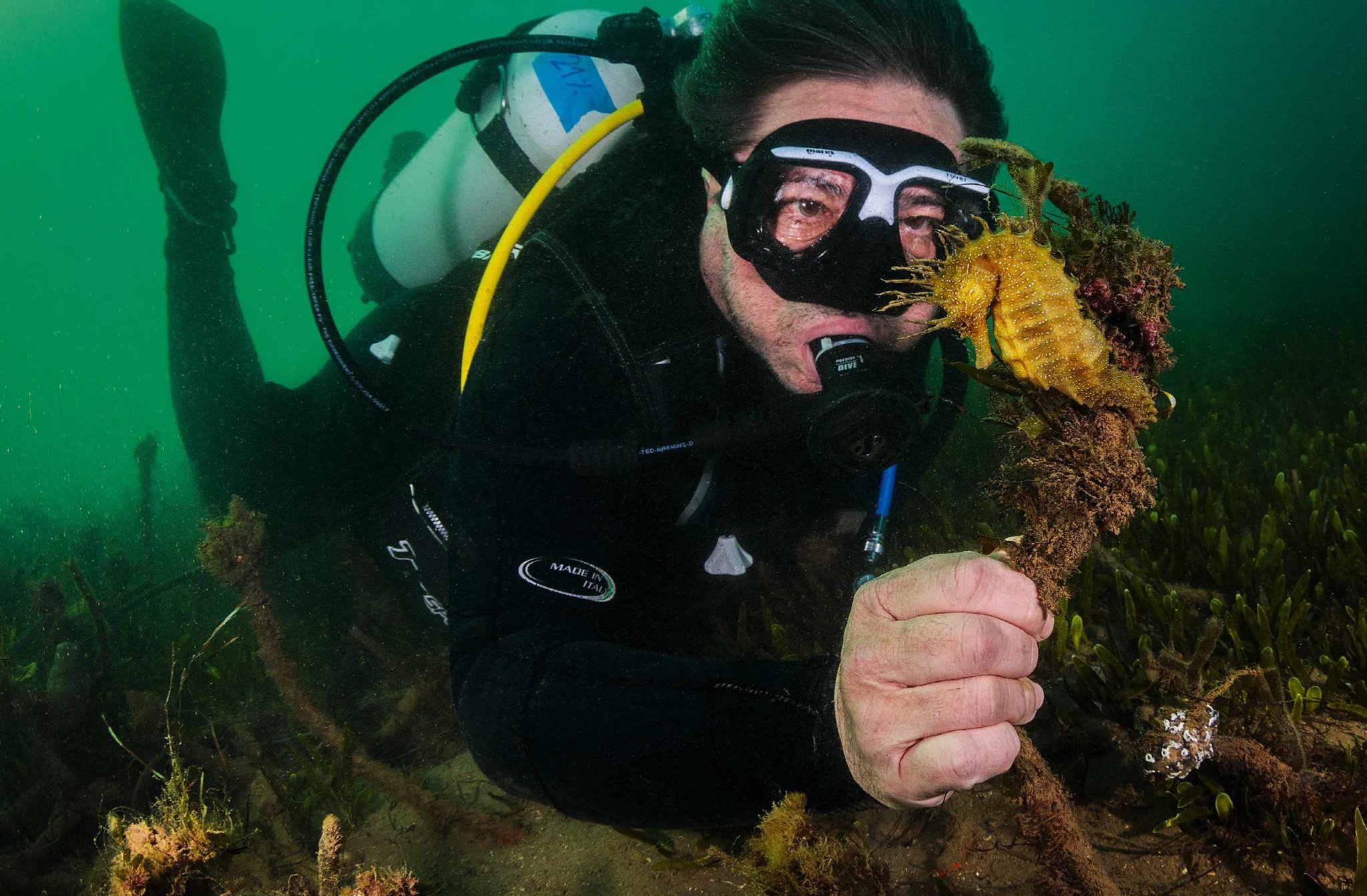
Conceição and Silvestre are frustrated, however, that the protected areas are still not marked by signalling buoys. Commercial fishermen adhere to the fishing ban, he explains, but others – usually amateurs earning extra cash or simply feeding their families – ignore it. “When we tell these people off, they just say: ‘Sorry, we didn’t know. There are no signs here’.”
Local marine police undertake patrols of the lagoon, and penalties for illegal fishing have been increased (to 37,500 Euros or up to five years in prison). Actual arrests are rare, though, as the police are under-resourced, and people are simply cautious during patrols.
Thankfully, a new wave of seahorse support has been forthcoming from the younger generation. In 2017, a number of local schools launched a project called Escola Azul (The Blue School). “We want to teach children and young people about the ocean and show them how to protect seahorses and other marine species,” says Patrícia Graça, a primary school teacher in the small coastal town of Olhão. Several times a year, the children visit the lagoon to carry out beach cleans and get close to its wild inhabitants. Scientists, including Palma, come along to teach the children about their work.
In the Algarve, it seems, an awareness of the need to protect the marine ecosystem is filtering out to many parts of society. The various measures that have been put in place – the designation of MPAs, increased penalties for illegal fishing, research programmes and public campaigns – are making a difference. And while the current population is still a fraction of its original size, Palma believes that numbers are currently stable.
The next challenge is already in full swing. The green alga Caulerpa, an invasive species thought to have been introduced from the Mediterranean, is spreading rapidly in the lagoon. It has no natural enemies and few seahorses settle where it grows. This is a new and overwhelming enemy for Palma and his colleagues. Clearly, their work here is not done yet. But with everybody working together, they remain optimistic.
SEAHORSES IN THE UK
Feeling the cold

The long-snouted seahorse is known as the spiny seahorse in Britain. Both it and the short-snouted seahorse occur all around British and Irish coasts. They have always been here and are depicted in ancient artwork. Most records come from the south coast, but this is due to more people seeing them rather than there being a higher number. It is thanks to the Gulf Stream, which creates the right conditions for seahorse prey, that seahorses can live here (and elsewhere in the North Sea and North-West Atlantic). Like many creatures habituated to colder conditions, British seahorses are bigger than their warm-water cousins, as large bodies cope better with cooler temperatures. They can survive at depths of up to 70m, where temperatures can fall as low as 6˚C.

ABOUT THE AUTHOR
Florian Sturm is a freelance journalist from Germany who focuses on marine science, conservation, travel and the outdoors. He is currently working on a book about marine protection. Read more about his work at florian-sturm.com.
ABOUT THE PHOTOGRAPHER
João Rodrigues is a photojournalist, film-maker and marine biologist specialising in natural history and conservation. chimeravisuals.pt.